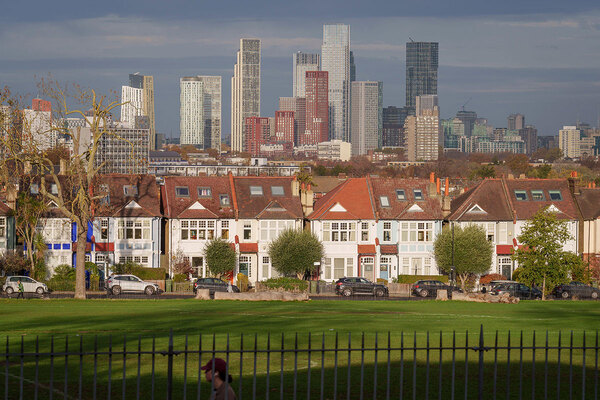How to build 1.5 million homes while keeping climate commitments
The government’s housebuilding target of 1.5 million homes by 2029 demands a new approach to urban design, writes Tom Fox, senior associate at We Made That
Recent research suggests that building 1.5 million homes by 2029 could consume the entire carbon budget that England needs to stick to in order to remain within 1.5°C warming. This stark reality puts local authorities in a challenging position.
While the government’s housing target sounds transformative, it represents a continuation of the supply-side interventions that have dominated housing policy for decades. Councils are expected to deliver unprecedented housing numbers while managing severe budget constraints and legally binding climate commitments – an equation that is increasingly unsustainable without a fundamental rethink of how and where we build.
This research shouldn’t be understood as a call not to build. Rather, it signals an urgent need to fundamentally rethink how we approach large-scale urban design projects, integrating demand-side interventions with rapid decarbonisation of both existing stock and new builds.
The economics are compelling. New research from Climate Services for a Net Zero Resilient World demonstrates that retrofitting England’s homes could save the NHS £1.8bn by 2050, with full-fabric retrofits alone saving £300m. For councils struggling with social care budgets and public health obligations, this represents a direct financial return extending far beyond traditional development models.
As recently argued in the Financial Times, addressing the lack of affordable homes requires demand-side solutions alongside supply increases. We have more homes than households, and this gap is growing. The challenge isn’t simply building more, but ensuring better distribution and utilisation of our existing stock.
The scale of challenge demands what UCL professor Mariana Mazzucato calls “mission-oriented policy making”, that is, co-ordinating multiple sectors around clear, ambitious goals.
Recent research provides stark clarity: under current policy, housing alone would consume 104% of England’s carbon budget for 1.5°C. However, aggressive retrofitting combined with zero-carbon new builds could reduce this to 60%.
Significantly, 92% of housing sector emissions come from the existing stock, with new construction accounting for just 12% of the cumulative carbon budget. This underscores the critical importance of retrofit alongside new build programmes.
This shift demands fundamental changes to how we approach large-scale projects:
Integrating whole-life carbon assessment strategically. This requires bringing whole-life carbon assessments into the earliest stages of planning, ensuring housing capacity assumptions account for retrofit opportunities alongside new construction. While assessments later in the process are important, they prevent developers from understanding how density, building typology and movement patterns lock in both embodied and operational carbon. Despite greater uncertainty in early-stage assessments, it’s better to be roughly right than precisely wrong.
Rethinking masterplan boundaries. Instead of defining masterplan areas primarily through large-scale development opportunities, we must scope projects to include areas of high retrofit potential. Masterplans should also aim to optimise the use of existing buildings, such as providing new homes to unlock “right-sizing”, enabling households to downsize while remaining in their communities, freeing up larger homes for families.
Our work at Crews Hill and Chase Park for Enfield Council demonstrates how settlement-scale development can enhance rather than compromise biodiversity. The project sits within a wider council-led landscape strategy addressing flood risk, rewilding farmland and improving ecological value – particularly important given England’s position as one of the most nature-depleted countries worldwide.
Planning infrastructure for retrofit at scale. Large regeneration projects must deliver the physical and social infrastructure needed for community-led retrofit. Our work in Canning Town with Newham Council demonstrates how regeneration areas can kick start circular economies while providing local employment opportunities. This includes space for material reuse hubs, skills centres and ‘meanwhile’ uses that coordinate material flows across development sites.
The path forward represents a fundamental shift in how we conceptualise sustainable urban design – not as an additional cost, but as essential infrastructure for resilient communities and public finances. When retrofit delivers measurable NHS savings, when biodiversity enhancement supports climate adaptation, and when circular economy hubs create local employment, sustainability becomes economically indispensable.
For local authorities, this approach offers a route beyond the traditional trade-offs between housing delivery, climate action and budget constraints. By integrating these challenges at the masterplan level, councils can deliver genuinely sustainable communities that reduce long-term public spending while meeting housing need.
Tom Fox, senior associate, We Made That



